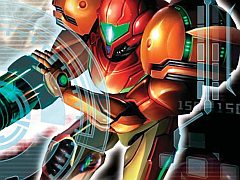Video Gamer is reader-supported. When you buy through links on our site, we may earn an affiliate commission. Prices subject to change. Learn more
Metroid: Other M is out now on Wii, but if you’ve never played a Metroid game before you might need a few pointers. Here’s our list of the 10 things you need to know about one of gaming’s most popular series.
Samus is a hero
/https://oimg.videogamer.com/images/c907/samushero.jpg)
Samus has been the star of the show since the original Metroid was released on the NES way back in 1986. No, she’s not a robot: underneath that super powered armour she’s actually a rather fetching blonde.
Metroids are evil
/https://oimg.videogamer.com/images/91f4/metroids570.jpg)
More often than not, Samus’ ultimate goal is to eradicate a parasitic alien lifeform known as the Metroids. These floating gelatinous monstrosities cause a whole load of bother by attaching to their foes and sucking the life right out of them. Nasty.
Space Pirates aren’t like regular pirates
/https://oimg.videogamer.com/images/0c72/metroidpirates570.jpg)
The Space Pirates are zealous insectoid aliens who want to rule the universe and, despite the series naming itself after the Metroids, are Samus’ real enemy. They’re controlled by Mother Brain; a nasty blob of grey matter that lives in a big jar.
It’s developed by Nintendo
/https://oimg.videogamer.com/images/482c/2008disappointmentsnintendo.jpg)
The original 1986 Metroid was produced by influential Nintendo designer Gunpei Yokoi – mentor of Shigeru Miyamoto, the creator of Mario, Zelda and Donkey Kong, amongst others – and directed by Yoshio Sakamoto. Samus is one of Nintendo’s most popular characters, although the series has always been more popular in the West than in Japan.
Metroid: Other M is being handled by Team Ninja
/https://oimg.videogamer.com/images/dc13/antic2010otherm.jpg)
Developer Team Ninja – most famous for its work on Ninja Gaiden and Dead or Alive – is no stranger to action games, and the announcement that the studio was working on a new Metroid was met with surprise and delight. The studio has opted for a controversial choice of blending 2D and 3D gameplay, including a mode where you point the Wii Remote directly at the screen to shoot rockets.
There are ten games in the series
/https://oimg.videogamer.com/images/b11f/top10april10metroid.jpg)
With the release of Metroid: Other M for the Wii this week, the series stands at ten strong. Metroid games have appeared on almost all of Nintendo’s consoles, with titles on the NES, SNES, Game Boy, GBA, Nintendo DS, GameCube and Wii.
Samus loves powerups
/https://oimg.videogamer.com/images/c92e/top10metroid1.jpg)
One of the core features of each game is that Samus will routinely gain abilities – like being able to jump higher, run faster or blow up really stubborn doors – from power-ups, allowing her to backtrack through previously-explored areas to unlock further bonuses. This maze-like quality of the levels is one of the primary reasons for the series’ continued success.
You need to be able to morph into a ball
/https://oimg.videogamer.com/images/968a/morphball570.jpg)
It is a truth universally acknowledged that all Metroid games require Samus to quickly unlock the ability to morph into a ball. It’s never, ever explained how Samus achieves such a feat. It doesn’t matter, anyway: a more pressing question is how so many powerups find themselves burrowed away behind clumps of dense rock that only a ball shaped person could possibly access.
You’ll need a map
/https://oimg.videogamer.com/images/bb2c/metroidmap570.jpg)
Whereas other action games flung you across a straight line, Metroid made life more complicated by forcing you to go up, down, left, right and back again. Along with the powerups, one of the key parts of each game is in just how much space there is to explore – and you’ll have to dig through most of it, too, if you want to be well-equipped enough to take on some of the series’ notable bosses.
It has seen success in both 2D and 3D
/https://oimg.videogamer.com/images/0ea8/decademetroidprime.jpg)
Long-time Metroid fans will probably talk about 1994’s 2D Super Metroid (for the SNES) as a pinnacle of the franchise, but the series was successfully revived in 2002 by American developer Retro Studios. The catch: it was a first-person Metroid game. The core elements of the series made a smooth transition to the third dimension, and Metroid Prime was popular enough to spawn two (at present) additional sequels.
